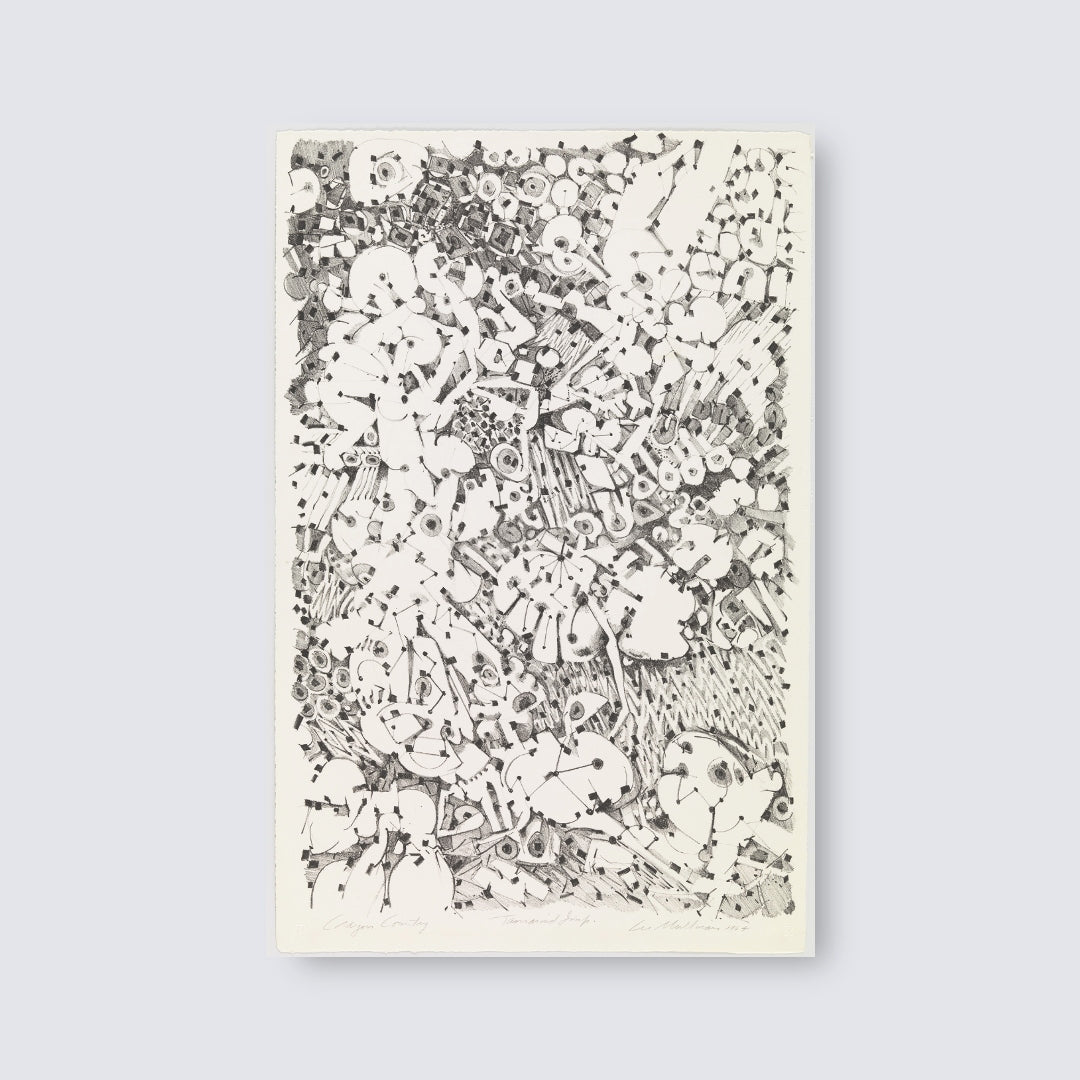


The 1970s marked a stylistic shift for Lee Mullican. In the early 70s, Mullican began to experiment with a more analytical approach to his painting, forsaking the use of explosive color and freewheeling organic forms from the previous decade. True to his signature technique, Mullican utilizes striations of paint in varying densities to create the forms and spaces. These matchsticks of color are arranged vertically and parallel over dark blue grounds, somewhat like transparent woven work or a dark doorway. Mullican used these marks to build lyrical patterns or dense forms that hover between being particle fields and opaque shapes.
The influence of the then-novel dot matrix imagery of early computer-aided graphics is apparent in Mullican’s work of the 1970s and 80s. Through the dark grounds and proto-pixel imagery, Mullican achieves a futuristic quality, a computer-tech look, with screens of pulsating blips that appear spectral and electronic. Mullican would later explain that the parallels between working physically and digitally were apparent: "I examined why I thought the computer was for me. Even in my paintings, I was always working with patterns, lines, and color. I've had a built-in computer ever since I’ve been doing art."